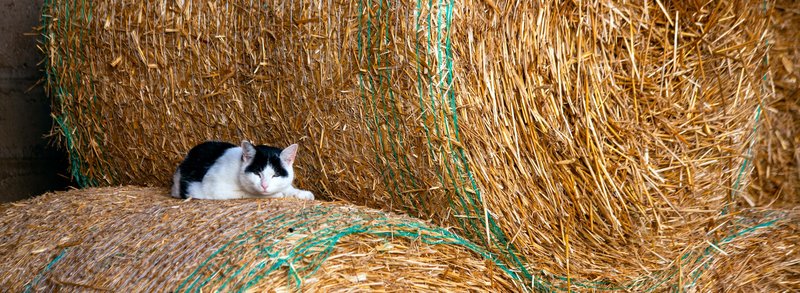If you’re on a farm and the nearest vet is 50 k’s out, it’s particularly worrying when your feline friend appears unwell. This guide is designed to help you spot any symptoms as soon as they appear and better manage your country cat’s health. Read on to find out how to tell if your cat is sick, what each symptom means and when you should consider zipping down to the vet:
Vomiting
Just like in humans, vomiting is a difficult symptom to diagnose in cats as it can point to any number of things. Vomiting can mean a hairball, exposure to toxins, a food allergy or simply that your cat is eating too fast. If your cat is vomiting once a day or more, it’s a good idea to go for a check-up.
Fleas
Your kitty might have fleas if they are scratching more than usual. Even indoor cats can catch fleas, and it’s not always apparent. Cats are exceedingly good at hiding their ailments and infestations – fleas are no exception. Luckily, there’s no need to rush off to the vet if your pet has fleas. What you can do is grab a flea comb from the store and look for tiny black dots crawling around in your cat’s fur. If a squished black dot turns a reddish colour, it’s a flea – and it means treatment is necessary before possible disease transmission. Your Country Practice vet can help you with this if necessary.
Worms
If your cat appears to be losing weight despite eating regularly, there’s a chance he or she might have contracted worms. If the cat’s stomach is bloated or distended, that’s a surefire sign. Other signs include coarse fur, the onset of diarrhoea, lethargy or bottom-itching on the floor.
Preventative treatment is the best way to manage worms, but if it’s too late you can pick up worming treatment from your local vet.
Diarrhoea
Diarrhoea is not only a sign of worms in cats – it can indicate anything from parasites and infections to environmental stress. A one-off incident with no other changes in behaviour indicates your cat is probably fine, but you should monitor the next bowel movement to be sure.
If the diarrhoea continues or any other behaviour changes (e.g. lethargy, loss of appetite or vomiting) it’s a good idea to go to the vet.
Eye problems
Eye problems can be a sign of some more serious feline ailments, like feline immunodeficiency virus (FIV). A yellow colour in the whites of the eyes can point to feline leukaemia, and discharge from the eyes can mean an upper respiratory infection. An abnormal or inflamed appearance in the eyes can signify your kitty might need a trip into town to visit the vet. These are illnesses cats can hide very well, so a regular checkup is important regardless.
Cancer
Unfortunately, cat’s can develop cancers – just like humans. Some of the clearest signs of cancer development in felines are excessive hiding, sores, lumps, changes in gum colour, nosebleeds, eye or nose discharge and seizures. Any of these symptoms mean it’s vet time, ASAP.
Diabetes
Cat diabetes can be signified by excessive urination and thirst. That’s because increased urination means decreased hydration, and therefore strong thirst to rehydrate. Weight loss and appetite changes are also strong signs – but again, those are applicable to many cat ailments. If your kitty is displaying any of these signs, get them to the vet.
Urination problems
If your cat is acting strangely when attempting to urinate – for example, crying while urinating, passing only small amounts of urine, urinating in unusual places and squatting for long periods of time – it could signify feline lower urinary tract diseases. These can often be immensely painful for cats, so vet treatment should be sought out as soon as possible.
Is your cat showing any of these signs? Book an appointment with A Country Practice to get expert help immediately.
